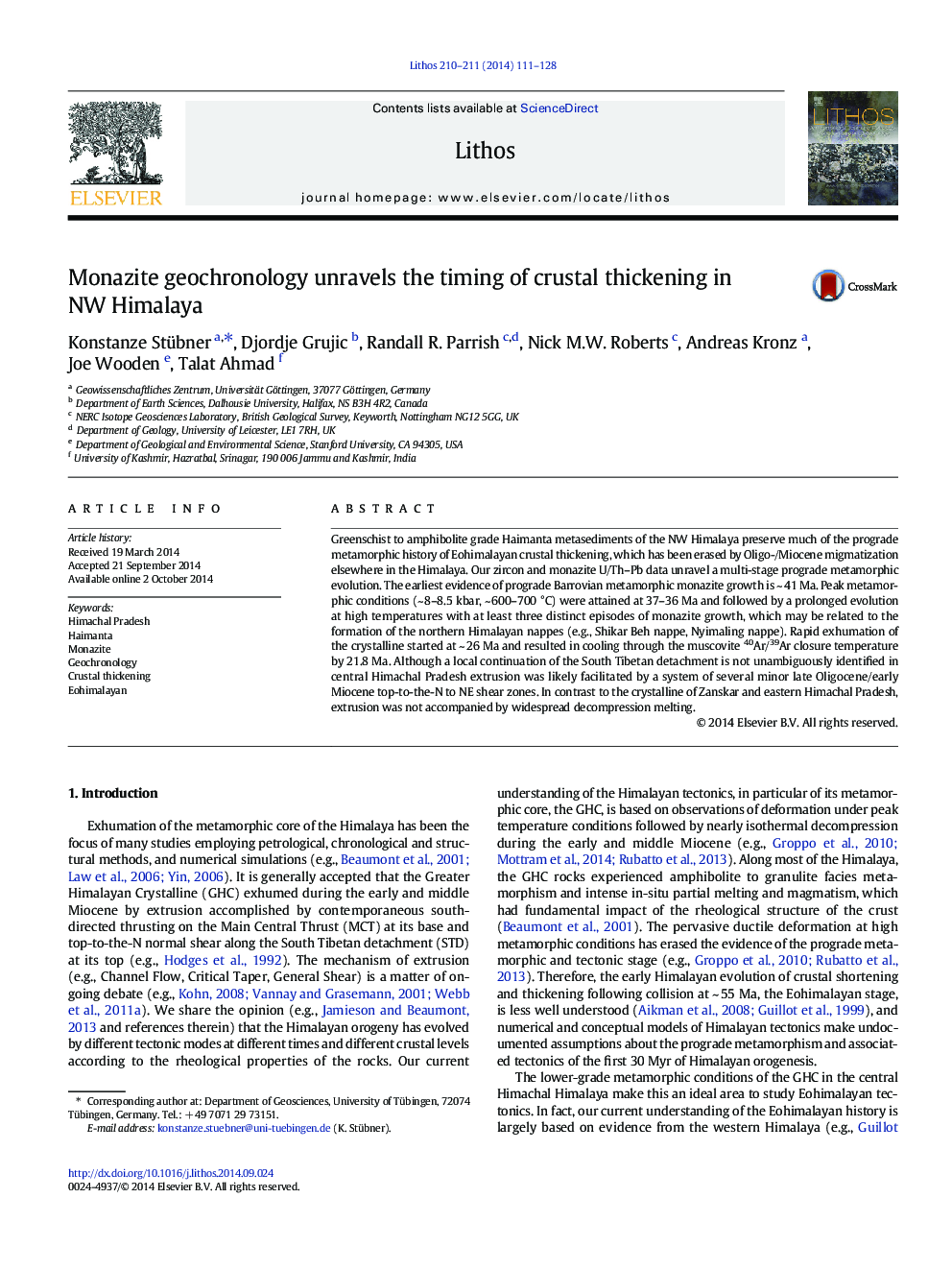| Article ID | Journal | Published Year | Pages | File Type |
|---|---|---|---|---|
| 4715768 | Lithos | 2014 | 18 Pages |
•Earliest evidence of prograde metamorphism in central Himachal Pradesh at ~ 41 Ma•Near-peak metamorphic conditions at 37–36 Ma•Onset of extrusion at 26 Ma coeval with Zanskar and Gianbul and Leo Pargil domes•No widespread decompression melting during extrusion
Greenschist to amphibolite grade Haimanta metasediments of the NW Himalaya preserve much of the prograde metamorphic history of Eohimalayan crustal thickening, which has been erased by Oligo-/Miocene migmatization elsewhere in the Himalaya. Our zircon and monazite U/Th–Pb data unravel a multi-stage prograde metamorphic evolution. The earliest evidence of prograde Barrovian metamorphic monazite growth is ~ 41 Ma. Peak metamorphic conditions (~ 8–8.5 kbar, ~ 600–700 °C) were attained at 37–36 Ma and followed by a prolonged evolution at high temperatures with at least three distinct episodes of monazite growth, which may be related to the formation of the northern Himalayan nappes (e.g., Shikar Beh nappe, Nyimaling nappe). Rapid exhumation of the crystalline started at ~ 26 Ma and resulted in cooling through the muscovite 40Ar/39Ar closure temperature by 21.8 Ma. Although a local continuation of the South Tibetan detachment is not unambiguously identified in central Himachal Pradesh extrusion was likely facilitated by a system of several minor late Oligocene/early Miocene top-to-the-N to NE shear zones. In contrast to the crystalline of Zanskar and eastern Himachal Pradesh, extrusion was not accompanied by widespread decompression melting.
